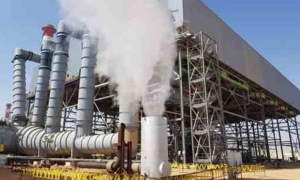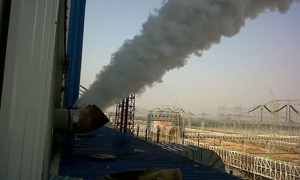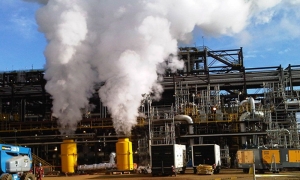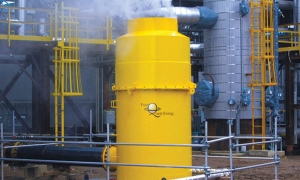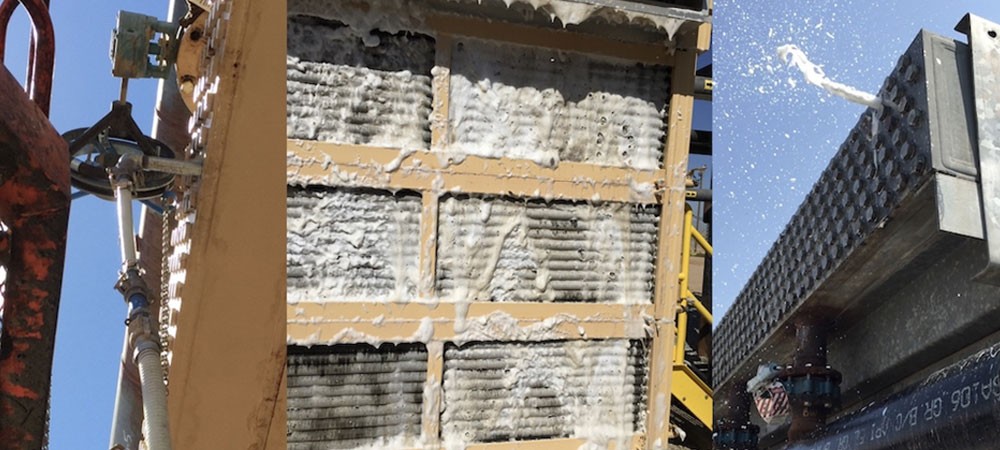Steam Blow Services
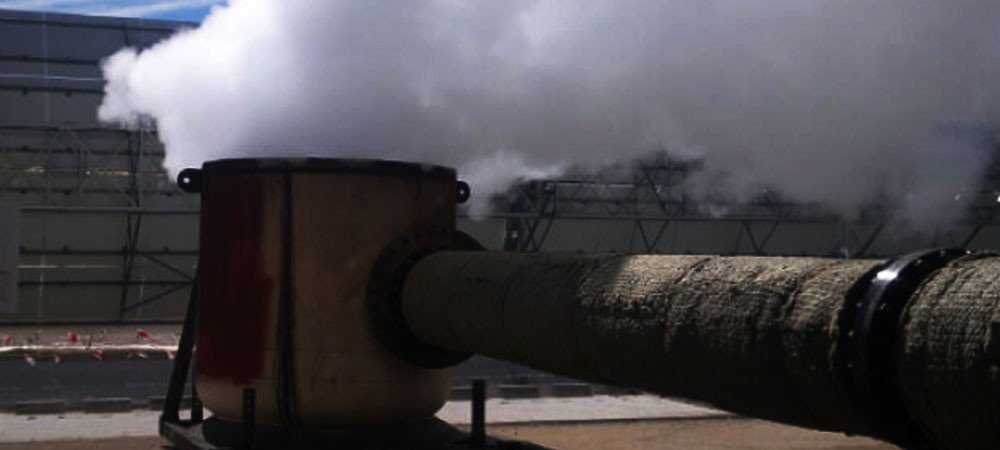
Steam Blow Services
We optimize our steam blows with quality engineering, and by utilizing the best equipment. Determining pipe sizing and design, pipe routing, steam conditions, noise level, thermal cycling, water quenching, and condensate generation are all factors that with our proper planning will ensure a successful steam blow operation.
When the pipe is fabricated during hot working, a heavy oxide layer forms. This layer is known as the mill scale and must be removed from critical systems before putting them into service.
Over time, enhancements have been made in plant start-up techniques to perform engineered steam blows that remove mill scale. During a steam blow, the piping is blown with sufficient boiler pressure to ensure that enough dynamic pressure will be experienced in the pipe to provide adequate cleaning.
During any plant start-up, there is a possibility that particles left in the pipe from the construction phase could break loose and travel downstream. These particles can damage instrumentation and impede other plant operations. Typically, boiler pressures used in steam blowing provide a dynamic pressure throughout the piping that is at least 20% higher than would be experienced in normal operating conditions (CFR ? 1.2). Any potentially damaging particles will be blown out of the piping prior to plant operation.
The time taken for an object to travel through the system and be ejected cannot be calculated. Instead, a technique of detecting particles in the emerging steam blow is used. This technique checks the emerging steam for particles impacting on a polished metal plate (commonly known as a target).
The steam blow method is similar to the exhaustive air blow technique, but the boiler is fired to generate the pressurized steam used to clean the steam path. Specialized quick-opening valves and a detailed procedure, along with the design of temporary spools, steam quenching devices, silencers, and debris-containing equipment are required to perform this service.
Before putting steam into the system, the control valves, turbine meters, instruments, vacuum ejectors, strainers, etc. should be removed or blinded off. The steam headers should be slowly warmed up, one header at a time, while expansion of the line is observed. Condensate must be drained manually to prevent steam hammering. The headers should now be blown using a low-pressure, high-velocity sweep as explained hereafter. Wherever allowed, only low-pressure steam is to be used if available at temperatures not exceeding 1200C.
When the headers are warm, the drain valves should be opened, and blown vigorously for a few seconds before closing. Each drain valve lateral to the header, exchangers, or service lines should be blown in the same manner, usually not more than one at a time. Condensate lines may be cleaned in the same manner as steam lines. A temporary movable silencer could be used to avoid exceeding noise level limitations during the steam-blowing operation, if necessary.
When the blow-down of the steam system is completed, equipment that was removed prior to the blow-down can be reconnected.
STEAM BLOW SERVICES
Steam blowing is one of the initial cleaning operations before starting any power plant or steam lines. Steam Blowing of MS lines, CRH, HRH, SH, RH, HP & LP bypass pipelines of the turbine are carried out in order to remove welding slag, weld bead deposits, loose foreign materials, iron pieces, rust, etc. from the system, generated during manufacturing, transportation & erection prior to turbine operation. The cleaning is accomplished by subjecting the piping systems to heating, blowing steam, and cooling cycles in sufficient number and duration until clean steam is obtained.
The effect of Steam Blowing depends on the following factors:
- Thermal shock
- Removal force of steam
- Cleaning force of steam
Cleaning Force Ratio or CFR of Steam Blowing
- The necessity to create in the system, a steam velocity greater than that is possible at MCR condition is obvious. These two velocities are expressed as a ratio Cleaning factor or Distribution factor or Cleaning Force Ratio denoted by X or K.
- CFR (Cleaning Force Ratio) is also known as Cleaning Factor or CF. CFR is an industry-accepted factor that determines the required dynamic pressure. CFR in steam blowing can be defined as the ratio of required dynamic pressure for cleaning to maximum dynamic pressure experienced during system operation.
Preconditioning for Steam Blowing
- Chemical cleaning should be completed.
- SH's primary and secondary de-superheater piping and RHs emergency de-superheater piping ready for operation
- All permanent piping & temporary piping insulated and supports/hangers are released with a cold setting
- Silencer should be connected at a temporary pipe exit
- Soot blowing for APH should be available Makeup for the deaerator made ready
- Motor-Driven BFP with all controls made ready
- Hydraulic test of the following lines completed:
- Feed Lines
- MS, HRH, CRH Lines
- MS to Aux. PRDS Line
- All other auxiliary lines identified for steam blowing
- The sampling system made ready
- Boiler auxiliaries proved serviceable and ready after a pilot operation like:
- Fuel oil system
- Compressors & Atomizing steam system
- Start-up system (for the continuous system)
- Coal Mill system (for the continuous system)
- CHP readiness
- Economizer hopper and bottom ash hopper and its evacuation system (for the continuous system)
- All safety valve discs installed after removing the hydro-static plugin drum(sub-critical), superheaters, and reheaters
- Adequate communication between the control room, boiler, and TG are ensured.
- Flow nozzle, control valves, and NRV flaps wherever applicable should be not erected before steam blowing and suitable spool pieces are erected. Strainers in the path should be removed.
- Required number of Target Plates and holders made available
STEAM BLOW SERVICES
Steam blowing is a method of cleaning of piping system where the energy and speed of steam are used to remove the impurities from the piping network. The temperature difference during steam blowing is used to remove the mill scale due to the expansion and contraction of the pipe.
The steam-blowing method is similar to the Pressurised Air blowing technique but in this case, a boiler is fired to generate the pressurized steam used for cleaning pipes. Some specialized quick-opening valves with a detailed procedure in parallel with a properly designed temporary network, steam quenching devices, silencers, and debris-containing equipment are used to perform this operation.
Terms Related to Steam Blowing
- CRH Line: Cold Re-heat, is the steam that lost its heat and pressure that can create an impact during the steam blowing procedure. This directs steam toward the inlet of the steam generator.
- HRH Line: Hot Re-heat, is the reduced pressure steam that is diverted towards the condenser.
- SH: Superheater
- RH: Re-heater
- HP: High pressure
- LP: Low pressure
- CFR: Cleaning force ratio
- MCR: Maximum continuous rating, is the capability of a steam boiler/Generator to produce and provide the required quantity of steam continuously and easily without any unwanted effects.
- PRDS: Pressure Reducing and DE Superheating System, is used for Steam Conditioning Services for reduction of pressure and temperature of steam.
- Puffing: It is a process to give a thermal shock to the internal surface of the pipe being purged, to dislodge the scale.
When pipe fabrication was under progress during hot working days, an oxide layer is formed on the inside surface of pipes. This layer is known as the mill scale, and this must remove from the system before charging the line with the service.
Cleaning by steam blowing is carried essentially for steam piping networks. Due to the problem of condensation of steam or draining of condensate. During the start-up of any plant, there is a possibility the particles left in the pipe from the construction stage could break and travel downstream. These particles can damage instrumentation and other critical components of the piping network.
In general, Boiler pressure used in steam blowing gives a dynamic pressure throughout the piping that is at least 20% higher than in normal operating conditions. Any potentially damaging particle remaining inside the pipe can blow out the piping system during plant operation.
Methods of Steam blowing
There are 02 effective ways through which we can perform steam blowing for the internal cleaning of pipes:
- High-pressure cyclic steam blowing
- Low-pressure continuous steam blowing
High-Pressure Cyclic steam blowing
In this method of steam blowing, the Piping arrangement for steam blowing is gradually pressurized until a predetermined pressure is reached. Once the required pressure is developed in the steam-blowing system, the Valve connected to it is opened quickly to release steam.
A quick opening of pressurized contained steam in the piping system that needs to clean develops a transonic phase with a high mass flow rate. In order to employ the cyclic blow, temporary piping has to be properly designed, and stress analysis has to be done before starting.
This method is repeated at regular intervals with the same steam pressure and mass flow rate until the cleanliness of the piping system is not determined. Normally, no more than one cycle can be performed daily to ensure adequate cooling of the piping system.
Advantage of discontinuous steam blowing
- Because of the higher pressure and temperature in this method, there is more thermal expansion in the main piping system.
- No gradients to a large diameter are required from the steam-blowing line to the silencer.
- No extra process or drinking water injection system is required.
Disadvantage of discontinuous steam blowing
- The required K-factor is achieved but it is for a very short period.
- Load increases greatly due to rapid increase and decrease in pressure and temperature.
- Steam blowing is performed not as per the design parameter of the system.
- A large amount of DM water is required compared to continuous steam blowing.
- Temporary steam blowing system attracts more cost as it needs to be made of alloy steam.
- A temporary blow-out valve is required which is an addition to the cost.
- Steam generators need to restart before succeeding cycles can be started.
Low-Pressure continuous steam blowing
During the pre-commissioning process, it is standard practice to continuously feed low-pressure steam for cleaning most steam piping systems. This method of steam blowing requires steam generators that continuously generate and fire steam.
In this case, the velocity developed by the steam generator is higher than the velocity of steam during normal plant operation. To control the pre-determined and required velocity of steam an orifice plate is installed at the inlet of the piping system, The steam with low pressure continuously blows until a satisfactory level of cleaning is achieved.
Recommended Parameter for Continuous steam blowing
A typical most efficient conditional parameter for continuous steam blowing is:
- Dynamic steam pressure = 3.5 MPa
- MS temp = 420C (not to exceed)
- HRH (Hot Re-heat) Line temp = 480C (not to exceed)
- Steam flow = 845 TPH (Ton per hour)
- Corresponding Drum pr. = 40 Ksc(Kg force/cm2)
- Furnace load? 39%
Advantage of Low-pressure continuous steam blowing
- The required K-factor is achieved for a longer period during steam-blowing cycles.
- Lower load on the system due to gradual and uniform increase in pressure and temperature.
- Steam blowing is done within design parameters.
- Smaller amount of DM water is required compared to the discontinuous method.
- Temporary steam-blowing piping system can be made of CS pipe which is cheaper.
- No temporary blowout valve is required.
Disadvantage of Low-pressure continuous steam blowing
- A larger diameter of temporary piping is required from the steam blow line to the water injection system.
- Extra process or drinking water is required for the water injection system compared to the discontinuous method.
- Larger gradients to larger diameters of temporary piping are required from the steam blow line to the water injection system.
- Extra process/drinking water is required for the water injection system compared to the discontinuous method.
After preparation of all points in the pre-cleaning procedure for steam blowing. The actual process of steam blowing starts with the permission of deciding authority in the control room. Steam bowing procedures to be followed are:
- Start the steam generator and boiler pressure need to slowly increase up to the required level and firing rate.
- The first blow needs to perform at low pressure to check the stability of temporary supports and permanent supports of the complete system.
- Temporary valve opening to be done to blow steam through superheater, main steam pipe, and temporary pipes too.
- First few steam blows needed to perform with the target plate until the steam color appeared to be clear.
- After getting clear steam, target plates need to place to capture particles going with the steam from the main piping network.
- While blowing fire is to be put out and pressure is dropped to ensure proper temperature differential to dislodge any material.
- Steam blowing needs to close and the boiler is started again for pressure build-up.
- Cleaning is to be checked from time to time until a satisfactory level of cleaning is achieved.
- After the achievement of the required cleanliness standard stop the steam generator and close the steam blowing valve after all pressure build-up in the generator reach zero value.
- After a mainstream line is cleaned with steam blowing all other networks need to clean in a similar manner.
